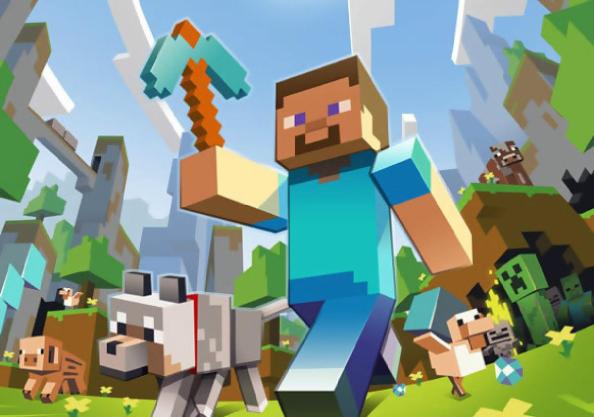
You will welcome this sight at first, before you have to finish twenty other stages with the exact same layout and objective.
I’ll make this short. After two months of play, two or three dozen quests and an equal number of times accidentally nuking my vampire by taking her out in broad daylight, three or four times when an enemy disarmed me and I had to restart because I couldn’t find my sword on the ground, the most epic final boss battle a game has ever permitted me to watch without actually participating in, and one final bug that prevented me from receiving the prize for finishing the main storyline, I have finally finished Oblivion. And I find I have absolutely nothing to say about it. Having spent the final forty hours pretty much the same way as I spent the first sixty, with the notable exception of a nagging feeling of repetition, as though I’d traveled through the same dungeons killing the same monsters for the same meager handful of gold coins, armor too heavy to carry, and weapons too cheap to make it worth carrying them to the nearest shop to sell them for yet another shitty handful of gold coins. Congratulations, Bethesda, you took the time and care in making an RPG with a skillfully crafted world that still somehow feels like a randomized-dungeon crawler.

Once I discovered the Shivering Isles, I stayed there for the next fifteen hours just because it didn’t look like the same old caves I’d explored thirty times in Cyrodil.
As Anne has already suckered me into a good forty hours or so of Minecraft since I finished the Elder Scrolls, I have to admit that the open-world, free-form game play does offer something therapeutic compared to the shorter, more directed games….Don’t expect me to explain it, though, as I just spent about ten minutes avoiding that question hopping from link to link on Facebook. (By the way, no, internet, Haley Joel Osmont did not grow up and become “super attractive.” He looks like a potato swallowing someone’s face like an amoeba.) Games like that, though, don’t need to rely on a well-written story or intricate game play, but with that same logic I could also say that Mega Man doesn’t rely on deep, philosophical introspection and God of War doesn’t rely on an anti-violence message or anger management techniques. You see an enemy? Hack it with your sword until it dies! Or maybe cast a spell on it. Which spell? It doesn’t matter! They all do the same thing! Just pick out the one that does the same thing more powerfully than all the rest!
Bethesda, as I mentioned in part one of this series, has made a name for themselves by making the same game at least four times (I haven’t played Morrowind…maybe five). They’ve also made a name for themselves in expansive, open world, hiking simulators and pathetically lame boss fights. Yeah, by crawling through RPG Maker in what little spare time I have, I’ve learned the stool-hardening madness inspired by crafting bosses as interesting battles rather than simply a thirty-second-long random enemy encounter with special music. Still, could we at least ask for a boss with slightly higher stats than the average enemy? A specialized attack pattern that requires more than “run up, hack with sword, back off, repeat” to kill? At least with the Elder Scrolls games, you don’t have to worry about finishing off the battle with a quick glance at your V.A.T.S. system.
Cut out all the inventory maintenance, travel time, consulting the map every thirty seconds, and questionable emphasis on combat, and poorly written quests that generally amount to “go there, get stuff, come back,” and Oblivion boils down to a character void of any personality, exploring a huge open world of trees, caves, and other natural wonders, who enchants armor, brews potions, and carries a sword to fight off obnoxious skeleton archers. Congratulations, Bethesda, you made a high resolution version of Minecraft. Who would have thought that you could have made tons more money if you had only half-assed the graphics?

Fuck you, order! I fight for madness and chaos! Like the freaking Joker! Up yours, shiny metal Batman!
Again, not that a game that offers aimless exploration with a handful of fringe benefits has to suck goblin nuggets. Games strive for a simulated experience, and even living on the cusp of the wild, untamed glacier of Northern Minnesota, I often feel way too wrapped up in our modern urban world, yearning, like Tolkien before me, to go “back to trees.” I think that people who read Tolkien and don’t see anything in it beyond “people walking” might not get the value of taking in the world for its wonders, which I think captures the true meaning behind Oblivion. So Bethesda, if any of you read this, stop releasing DLC and get the licensing to do a game set in Middle Earth. And then someone needs to develop immersive virtual reality so you can release your next game on a VR console. And also VR Minecraft.



